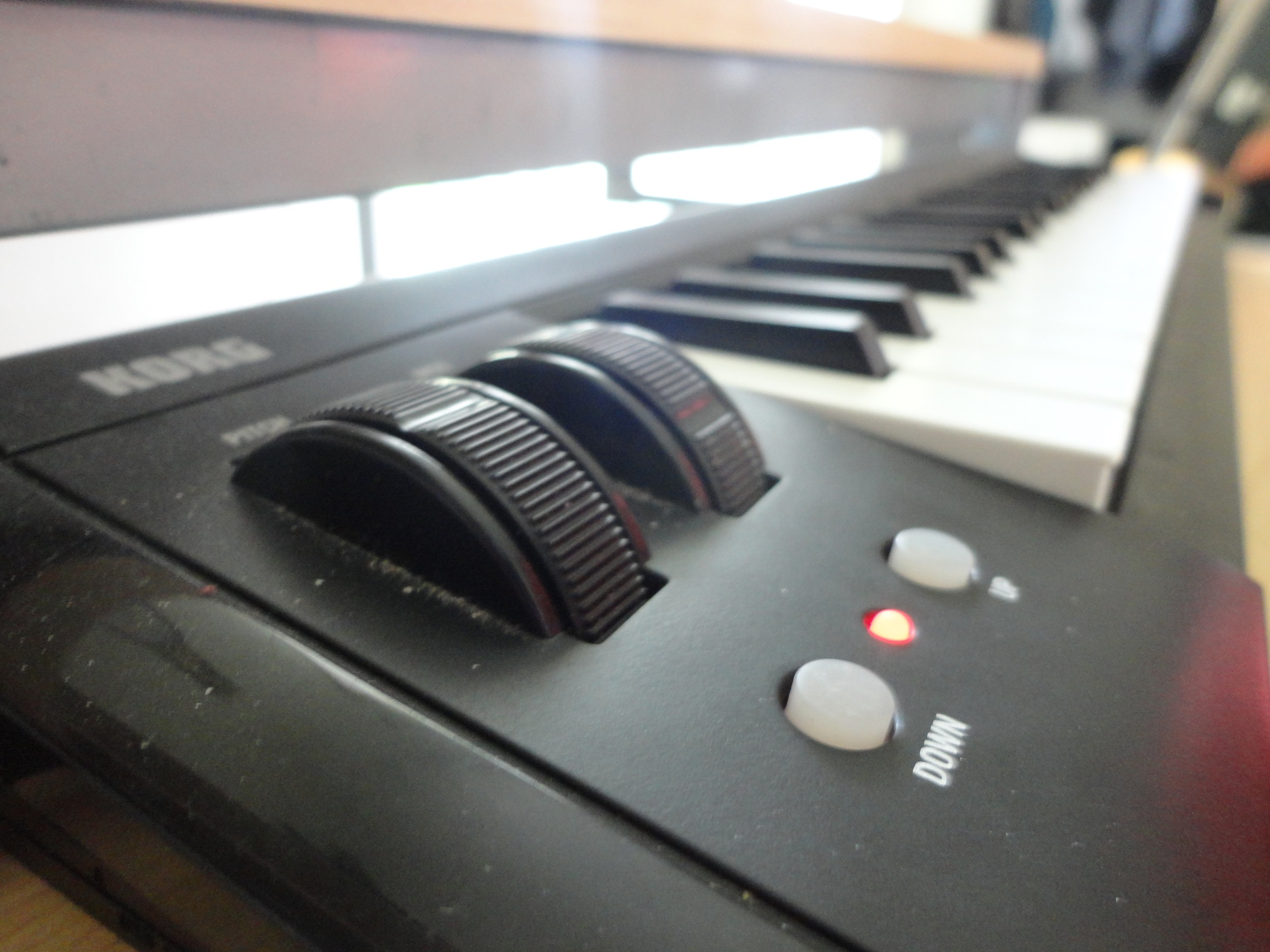-
Posts
6,137 -
Joined
-
Last visited
-
Days Won
49
Content Type
Profiles
Forums
8Tracks
Events
Blogs
Everything posted by timaeus222
-
Definitely not what I expect from hearing that Terra and Schala got combined 🤣 Luckily the mixing is convincing of the approach and intent. The vocal clips threw me off a bit, but I think they ultimately worked out. The sound design was a touch basic (such as the 3:15 saws and the 3:40 low chord stabs), but this was still enjoyable overall, and relatively smooth in the arrangement department.
-
Kristina's been collabing a lot lately, really cool to see. I'm not sure if she's explored Drum & Bass a ton, but this was a neat exploration into that genre if she hadn't, and well-executed at an immersive angle if she has! I like the ending from Wes as well, adds a somewhat spooky element, but still maintained the bubbly nature of Kristina's usual mixes.
-

OCR04795 - Globulous "Astral Projection"
timaeus222 replied to Liontamer's topic in ReMix Reviews & Comments
Ay 😀 This was definitely a blast to write, and for me the challenge was in being able to replicate some of the original chords. Despite zircon's crisp production, he can write some tough chords. I couldn't just hear them and mouse them in, so I felt them out on my keyboard :) (Also Larry, you're really nailing Dave's wordplay and style 👍) -

OCR04787 - Dark Souls "Lord Gwyn's Age of Fire"
timaeus222 replied to Liontamer's topic in ReMix Reviews & Comments
Engaging indeed! Definitely would like to see this guy return :) -

OCR04776 - Kirby and the Forgotten Land "World of Pink"
timaeus222 replied to Liontamer's topic in ReMix Reviews & Comments
Some cool chord progressions going on here! I also like the vocals. Good amount of cheesy. -
This may be one of my new favorite albums on the site. Some highlight tracks on the album: Life is Peachy - loved the chill vibes on here Road Rage - love me some metal A Translator's Tale - widely spans multiple genres, with smooth transitions :) Bonhomme de Neige - smooth sound design, cool distortion! Gold Soul - spot-on performances, and clean grooves! Desert Smash - nice to see Middle-Eastern music represented, and I like the changes into half time, double time, and regular time Sportsball - clean performances; relaxing, and chill Think on Your Feet - props on the bass solo, and the triplet drums in the middle :) (don't get me wrong though, every track on the album was good!)
-

OCR04752 - Dragon Warrior "A Translator's Tale"
timaeus222 replied to Liontamer's topic in ReMix Reviews & Comments
How has no one said anything? :( This is actually such a wide arrangement that isn't trapped in a single genre, I love it. -

OCR04742 - Pokémon Pinball "Pocket Arcade"
timaeus222 replied to Liontamer's topic in ReMix Reviews & Comments
A bundle of joy! :) -

OCR04762 - Pokémon Crystal Version "Spacious Beauty"
timaeus222 replied to Liontamer's topic in ReMix Reviews & Comments
Thank you for posting this! Now I know I can tackle other iconic themes. ;-) -
Happy 25th :D - I discovered OCR while I was making my Pokemon Crystal walkthrough on YouTube, and I was looking for background music each week. The first song I picked was "Beamsabre Beat ZERO v2" from Shariq. This was like 2009. - I've been a fan of these artists or become a fan lately (if I didn't list you I just forgot xD): zircon - intriguing sound design, surprising chord progressions, and crisp production Joshua Morse - well-established "distinctive sound", exciting arrangements, funky vibe WillRock - well-established "distinctive sound", shredding solos, nostalgic vibe Chimpazilla - well-established "distinctive sound", open-minded, friendly personality Big Giant Circles - clean production, wholesome personality, well-established "distinctive sound" Juan Medrano - guitar master, nostalgic vibe, clean production Prince uf Darkness - guitar shredder, clean production, magnum opus orchestrator J Damashii - crazy arrangements, creative mind, wacky personality bLiNd - clean production, wholesome personality, EDM master Sam Dillard - incredible orchestrations, expansive knowledge of dynamics, creative mind - Here are some of my favorite tracks of all time: The Unholy Wars (Juan Medrano + Dhsu) Become Death (J Damashii + me) Blast Beatdown (zircon + tefnek) Bleets of Lightning (WillRock) The God Machine (Vig) Tropical Paradise - ambient (Big Giant Circles) Beyond the Glass (Sam Dillard) Club King Bowser (bLiNd) There's a Zomboss on my Roof (Chimpazilla + me) Prancing Dad (Prince uf Darkness) Fossil Fuels (Joshua Morse)
-
I wanted to see if I could mock up the first 2 minutes of Jordan Rudess's "Embers" from "Permission to Fly", this is how it turned out :) Took about 2 hours. https://app.box.com/s/kd953a98fc19e8insm5ur0zapxmiu7x4 Here's the original: --- I used: - Shreddage 3 Jupiter (lead) - Shreddage 3 Precision Bass - Shreddage Drums - Shreddage Amp XTC - TruePianos
-

OCR04730 - Kirby's Dream Course "Funky Mountain Peaks"
timaeus222 replied to Liontamer's topic in ReMix Reviews & Comments
Ooh, nice and quirky stuff going on with the pitchy synth at the beginning. Reminds me a bit of Mazedude's stuff. Pretty cool jam! -

OCR04732 - Pokémon SoulSilver Version "Gold Soul"
timaeus222 replied to Liontamer's topic in ReMix Reviews & Comments
Lots of cool textures going on here! I'd imagine there were at least 30 layers. I really liked the bells/vibraphone! Cool solo section at 3:10 as well! -
Here are some of my recommended tools I've used the most (I'll mark which ones were already mentioned as "*"): Drums (Libraries) - *ISW Shreddage Drums Heavocity Damage Drums (Samples) - I always go back to these Platinum Percussion (great for world music) BHK D&B Rough Connections Vol. 4, Bladerunner Dread Drum & Bass (for fast music) Equipped Music - Smoker's Relight Vol. 1, Vol. 2 (for Downtempo music) Black Octopus Leviathan (for hardcore EDM) Goldbaby Drums (MPC60 Vol. 1-3, When Alien Drum Robots Attack Vol. 1-2, for general use) Synths - I always go back to these *u-he Zebra2 (for practically ALL of my music honestly) *Xfer Records Serum (mostly for dubstep) Samples - 4Front TruePianos (physical model actually) *Spectrasonics Omnisphere, Trilian ISW PEARL: Concert Grand (truly an amazing Yamaha C7) ISW Resonance: Emotional Mallets (mostly for glassy percussion) Embertone Friedlander Violin and Blakus Cello (usually as solo instruments) OTS Evolution Acoustic Guitar (Steel Strings) Neo-Soul Suitcase (realistic electric piano, if I wasn't satisfied with just synthesizing that in Zebra2) Transitions (Samples) - I always go back to these ISW Juggernaut: Cinematic Electronic Scoring Tools Effects - u-he Uhbik (mostly "T" [tremolo] and "G" [granular]) *Guitar Rig Effects (free or nearly so) - Variety of Sounds Density MKIII (compressor), NastyDLA MKII (delay) *kiloHearts Essentials (most notably, Ring Modulator and Transient Shaper) ISW SNESVerb (SNES reverb emulator, $20) digitalfishphones endorphin (compressor) *dBlue Glitch v1.3 (free) and v2 ($60) Lofi Plus (bitcrusher; hard to find, let me know if you need a link) Sonalksis FreeG Stereo (Gate Plugin) Misc (free) - I always go back to these s(M)exoscope (spectroscope to check waveform loudness) *TDR Nova (Equalizer with Sum and Difference capabilities) TLs-Pocket Limiter (simple, soft knee limiter. Never got overcompression since!)
-

is anyone familiar with the IOS app called SNESmusic?
timaeus222 replied to DialectiKs's topic in General Discussion
Cool to see. I've been using khinsider for video game OSTs myself. -
Looking forward to the great work you guys will bring! :-) Honestly, I did feel the same way about the Evaluators' position - this is a great change.



